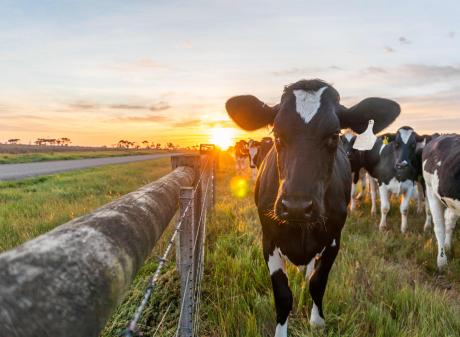
News of the long-awaited return of a rabbit virus - to knock down numbers of the populous pest - was welcomed in all corners of Otago yesterday.
The Otago Regional Council yesterday announced the application to import and release RHDV1 K5 - a Korean variant of the rabbit calicivirus illegally released in Otago in 1997 - was approved with an expected release in March and April.
The 100 doses to be released in strategic locations across the region would create ''the best opportunity for a natural epidemic to kick off and take hold'', council environmental monitoring and operations director Scott MacLean said.
''This will be sufficient, based on the science, to create an epidemic in Otago - so we don't need to release any more than that,'' he said. ''And as it did when the illegal release took place, the virus will make its way right around Otago in time.''
If successful, the $60,000 operation could reduce the rabbit population by more than 40%, he said.
The application for the Korean strain of the virus was made by Environment Canterbury on behalf of Land Information New Zealand, the Department of Conservation, Federated Farmers High Country Industry Group and the regional council sector.
ECan's biosecurity regional leader, Graham Sullivan, said the ''major nationwide release'' in autumn was expected to overcome rabbits' ''immunity to a benign calicivirus strain which is present in many New Zealand rabbits, and which has been found to confer immunity to the current RHDV1 strain used for pest control''.
Landcare Research estimates the cost in lost agricultural production per year in rabbit-affected areas across the country to be more than $100 million and farmers yesterday said they hoped 40% was a conservative estimate of the potential effects of the virus.
Matakanui Station (Omakau) farmer Andrew Paterson said his extensive sheep and beef property was infested with rabbits in parts.
''We are just coming out of a drought; the rabbits are flat-out eating all of the short grass we are getting,'' he said. ''At the moment our place is moving with rabbits.
''We've got hundreds and hundreds - maybe even millions - of rabbits here; we could be running thousands more sheep.''
Near Moeraki, Mark Brady was keen to use ''anything to reduce the buggers'', while farmer Doug Stalker said because of the area's ''plague proportions'' of rabbits, the kill rate ''would have to be higher than that [40%] from our point of view''.
''And I think you'll find that it will be. Based on [present] populations it will spread faster ... it will have a deadlier impact.''
Federated Farmers High Country chairman Simon Williamson, who farms Glenbrook Station near Omarama, is ''hoping for more of an 80% to 90% figure''.
Mr MacLean said there was ''a whole lot of factors'' that made introducing the virus in March and April optimal, including ''sufficient fly activity'' - not only did rabbits pass the disease from one to another, but carrion flies and blowflies helped to spread the virus, as did the faeces of hawks, ferrets and cats that fed on infected rabbits.
Although only European rabbits were susceptible to the virus, pet owners should talk to their vets to ensure their animals were vaccinated.
The virus would only knock back numbers enough to make rabbit control reasonable and would not replace standard practices.
Dalefield (Wakatipu) sheep and beef farmer Chris Dagg said good management practices and a ''co-ordinated approach'' would be needed to keep rabbit numbers low.
Near Queenstown, small blocks of land with different uses and rabbit control needs made co-ordinated efforts difficult.
What is RHDV1 K5?
RHDV1 K5 is a variant of rabbit haemorrhagic disease virus (RHDV1), which causes a fatal haemorrhagic disease in the European rabbit.
It spreads by contact of rabbits with infected materials (such as faeces or bedding material), and by insect vectors such as carrion flies and blowflies.
Infected rabbits develop symptoms in 24 to 72 hours after infection, and usually succumb within six to 36 hours after the first symptoms appear. Many infected animals show no signs of disease and die suddenly.














